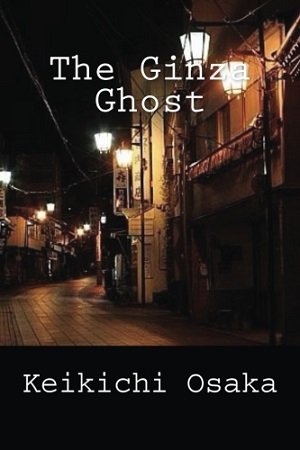
Written by Keikichi Osaka, translated by Ho-Ling Wong — Tokyo has changed a great deal in the past century or so. There have been two catastrophic earthquakes, heavy bombing during World War II, and spiralling property prices that led to an eventual collapse. On the other hand, the city’s also seen remarkable growth as people have moved away from the countryside. Despite the differences, some things have remained almost the same since Keikichi Osaka wrote The Ginza Ghost in the 1930s.
The area known as Ginza, just south of Tokyo station, is still the area where the wealthy consume as much as they can, setting record per-foot property prices before the bubble burst, while the poor live in one-room apartments and eek out a living doing whatever work they can. Osaka’s Ginza and surrounds are a glimpse at a Tokyo of long ago, a Tokyo that has been swallowed up by the megacity now preparing to host its second Olympic games.
As the title suggests, this collection features a great deal more hints of the supernatural than you’d probably expect from an orthodox 1930s crime story with murder suspects ranging from ghosts to monsters to Santa Claus, and quite a few mysterious disappearances. Osaka’s work is perhaps at its best when it’s at its strangest. The title story, for instance, features a murder suspect who is later discovered to have died herself almost an hour before her supposed victim.
This motif is repeated several times throughout the collection. In The Demon in the Mine, a dead miner becomes the main suspect in multiple murders, apparently committed to avenge his death. In fact the stories in this collection are all retellings of three basic plots, suggesting the stories probably read better as individual pieces printed in magazines rather than side-by-side in a collection.
The style and substance varies, but essentially each one sets up an impossible situation and then, through careful deliberation, arrives at the improbable (but not impossible) solution. Murderous twins disappear in broad daylight, a lighthouse keeper is crushed by a stone mysteriously flung to the top of his lighthouse, cars and kidnappers disappearing as they flee from the scene of the crime – each story has its own impossible setup, each is taken apart and then revealed in the final paragraphs.
If you appreciate trying to outguess the detective you’ll have a hard time with this collection, which for the most part adheres to the doctrine that when you have eliminated the impossible, whatever remains, however improbable, must be the truth. Those who like the element of surprise, on the other hand, should avoid the introduction until after reading the stories. Ho-Ling Wong’s translation for the most part takes readers back to 1930s Tokyo with just the right mix of the foreign and the familiar, the current and the archaic, but falters once or twice by revealing what can be left ambiguous in the Japanese. The author’s attitude towards women is also firmly entrenched in the 1930s, and parts of this collection make for uncomfortable reading as a result.
Osaka’s work an example of the honkaku school of mystery writing, and he wears his influences prominently on his kimono sleeves, sleeves that might as well be made of the tweed worn by Arthur Conan Doyle’s famous detective. This collection of stories borrows heavily from Conan Doyle, with nods to the weird world of Edgar Allan Poe. Stories in this collection were all written around the same period of time in the 1930s and early 1940s and were published in a variety of literary magazines specialising in detective fiction. The author died tragically young in the Philippines during the outbreak of WWII, and these stories cover most of his published work, and were written for a number of magazines.
Osaka’s works are largely forgotten in Japan, despite existing in the public domain. I’d love to see a little more delving by dedicated publishers and translators unearthing even more unique works from the detective magazines of the early 20th century. For those readers who love a good locked-room mystery, this collection features several interesting twists on the old formula, and is a great place to start among the works published by Locked Room International.
For more Japanese crime fiction, click here.
Locked Room International
Print/Kindle
£7.66
CFL Rating: 3 Stars